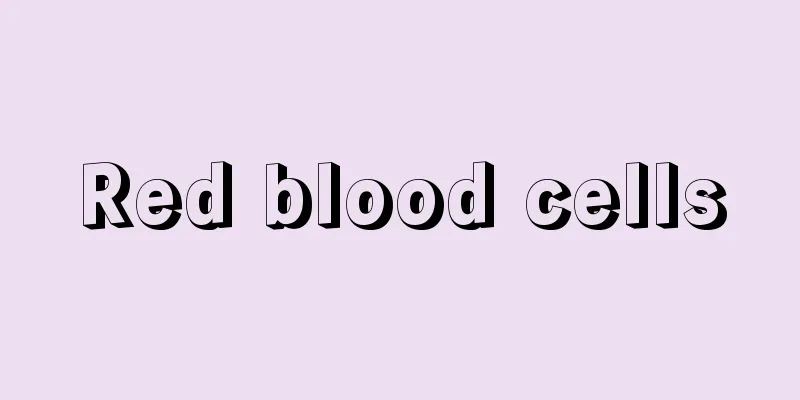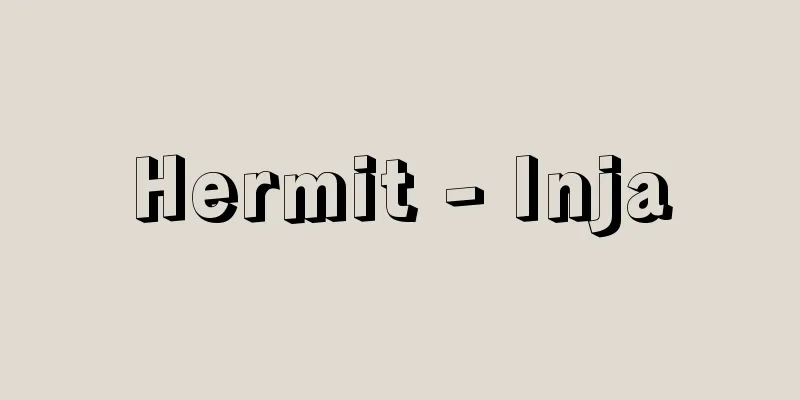Red blood cells

|
(1) Dynamics and function a. Dynamic red blood cells are disk-shaped cells with a diameter of 7 to 9 μm that are depressed in the center on both sides. They are highly deformable and can pass through capillaries with an inner diameter of 4 μm, and can transport oxygen throughout the body. Red blood cells do not have a nucleus, nor do they have intracellular organelles such as mitochondria, ribosomes, or endoplasmic reticulum. More than 95% of cytoplasmic protein is hemoglobin, and the remainder contains glycolytic enzymes necessary for energy production and enzymes that keep hemoglobin in a reduced state. In an adult, the total amount of circulating red blood cells in the body is about 2000 mL, which is equivalent to 750 g of hemoglobin. Since the physiological life span of red blood cells is 100-120 days, about 1% of the red blood cells in the body are destroyed every day, and at the same time, the same number of new red blood cells are produced. This is equivalent to about 20 mL of red blood cells and 7.5 g of hemoglobin, and means that 10 10 new red blood cells are produced per hour. In other words, in our bodies, a huge number of old and new red blood cells are replaced every day. Moreover, this is hemopoiesis in a steady state, and when more red blood cells are needed due to bleeding or hemolysis, the bone marrow has the reserve capacity to produce 3 to 5 times this amount. Like other blood cells, red blood cells originate from blood stem cells. Blood stem cells self-replicate and at the same time proliferate and differentiate to become precursor cells of red blood cells, white blood cells, and platelets. The most immature of red blood cell precursor cells is the early erythroid precursor cell (burst-forming unit-erythroid (BFU-E)). BFU-E differentiates into late erythroid hematopoietic precursor cells (colony-forming unit-erythroid (CFU-E)), and one CFU-E undergoes 4 to 5 cell divisions to become 16 to 32 red blood cells. During this time, hemoglobin synthesis is actively carried out within the erythroblast cell, the nucleus shrinks, and is eventually released outside the cell (enucleated), and then becomes a red blood cell via a reticulocyte (Figure 14-3-1). This process takes about 7 days. Reticulocytes in the bone marrow tissue eventually flow into the venous sinuses of the bone marrow and appear in the peripheral blood. This influx is selective for mature blood cells and is called the blood-bone marrow barrier (BBB). Reticulocytes released into the peripheral blood become mature red blood cells within 1-2 days and survive and function in the peripheral blood for approximately 120 days. b. Function The main function of red blood cells is the transport of oxygen by hemoglobin. Hemoglobin binds oxygen in the lungs and delivers it to peripheral tissues, and transports carbon dioxide produced in the periphery to the lungs. The oxygen transport capacity of red blood cells is determined by the number of red blood cells, the amount of hemoglobin, and the oxygen release capacity of hemoglobin, and oxygen transport capacity decreases if there is a decrease in the number of red blood cells, a decrease in hemoglobin concentration, or an increase in the affinity of hemoglobin for oxygen. The hemoglobin oxygen dissociation curve, which shows the relationship between the oxygen concentration in tissues and the oxygen saturation of hemoglobin, is S-shaped (Figure 14-3-2). It is important that this curve is S-shaped in order for hemoglobin to effectively bind and release oxygen. (2) Biosynthesis and metabolism of hemoglobin a. Biosynthesis Hemoglobin is the "red color" of blood itself, and is synthesized during the maturation of erythroblasts. One molecule of hemoglobin is composed of a dimer of an α-like globin subunit and a dimer of a β-like globin subunit (four globin subunits in total) and four hemes (Figure 14-3-3). Heme and globin are synthesized separately within erythroblasts and then combine to form hemoglobin. Heme synthesis begins in the mitochondria of erythroblasts when succinyl-CoA and glycine are synthesized in the presence of δ-aminolevulinic acid synthase (δ-ALA-S) to form δ-aminolevulinic acid (δ-ALA) (Figure 14-3-4). δ-ALA leaves the mitochondria, passes through porphobilinogen, uroporphyrinogen, and coproporphyrinogen, and re-enters the mitochondria to become protoporphyrin, and then takes up iron in the presence of heme synthase to become heme. Alpha-like globin chains include alpha and zeta chains, and their genes are located on the short arm of chromosome 16. Beta-like globin chains include beta, gamma, delta, and epsilon chains, and their genes are located on the short arm of chromosome 11. These globin genes are transcribed and translated, and synthesized as polypeptide chains (globin subunits) on ribosomes. Each polypeptide chain has a helical structure and forms a stable spherical structure. When this spherical polypeptide chain incorporates heme, four molecules polymerize to form one stable hemoglobin molecule. Among the globin genes, the zeta and epsilon genes are only expressed for a short period of time during early fetal development, and HbF (α 2 γ 2 ), which consists of alpha and gamma chains, accounts for the majority of hemoglobin until birth. After birth, HbA (α 2 β 2 ), which consists of alpha and beta chains, becomes the main component. Immediately after birth, δ chains begin to be synthesized, and HbA2 (α 2 δ 2 ) is also produced. The hemoglobin fractions of adults are 97% HbA, 2% HbA2, and 1% or less HbF. This change in the hemoglobin genes expressed during development is called hemoglobin switching. b. Red blood cells that have reached the end of their metabolic life span are captured and phagocytosed by reticuloendothelial cells such as macrophages in the spleen. Hemoglobin in red blood cells is broken down into amino acids, iron, and porphyrin rings (Figure 14-3-5). Iron binds to transferrin in the plasma and travels through the bloodstream to the bone marrow, where it is reused for the production of red blood cells, or becomes ferritin or hemosiderin and is stored in reticuloendothelial cells. Amino acids are added to the body's amino acid pool and reused. Porphyrin rings cannot be reused, so they are discarded. In other words, the porphyrin ring is opened to become indirect bilirubin, which is transported to the liver bound to albumin, where it is conjugated with glucuronidation. The glucuronidated bilirubin (direct bilirubin) is secreted into bile, passes through the gallbladder and bile duct, and is excreted into the digestive tract. The excreted direct bilirubin is converted to urobilinogen by intestinal bacteria in the digestive tract, most of which becomes urobilin and is excreted in the feces. The orange-yellow color of this urobilin gives the stool its color. 10-20% of urobilinogen remains unchanged, some is excreted in the urine, and some is absorbed from the digestive tract, returns to the liver and is excreted back into the digestive tract (enterohepatic circulation). When there is liver disease, the enterohepatic circulation is impaired, and a lot of urobilinogen is excreted in the urine. (3) Iron metabolism a. Distribution and dynamics of iron in the body. In adult males, there is about 5 g of iron in the body, of which 2/3 is in red blood cells as hemoglobin, and the remaining 1/3 is stored in the liver and spleen as ferritin or hemosiderin. The remaining small amount of iron is present in muscles and enzymes as tissue iron. Although the amount of iron in plasma is small, it is important for iron transport. The average daily diet contains 20-30 mg of iron, of which 1-2 mg is absorbed from the duodenum to the upper jejunum (Figs. 14-3-6, 14-3-7). However, about 20 mg of iron is required to produce about 20 mL of red blood cells per day. Therefore, the iron absorbed from the digestive tract alone is not enough to produce red blood cells, and most of the iron is recycled from the hemoglobin in red blood cells that break down over the course of their lifespan. On the other hand, there is no physiological mechanism for actively excreting iron, and the only physiological route of iron excretion is through the shedding of digestive epithelial cells. Furthermore, the amount of iron excreted is only a tiny amount, at 1-2 mg per day (Figure 14-3-7). Therefore, iron in the body is strictly regulated to prevent excess or deficiency. Hepcidin, a polypeptide consisting of 25 amino acids produced in the liver, plays a central role in regulating iron balance in the body. b. Regulation of iron balance by hepcidin Hepcidin binds to ferroportin on the cell surface. Ferroportin is a protein that exports iron from inside the cell to the outside, and is present on the membrane of cells involved in iron export, such as gastrointestinal epithelial cells that absorb iron from food and macrophages that break down waste red blood cells and recycle iron. Ferroportin bound to hepcidin is taken up into the cell and decomposed. Therefore, when hepcidin production increases, ferroportin expression decreases, iron export from gastrointestinal epithelial cells and macrophages decreases, and iron utilization in the body is suppressed (Figure 14-3-8A). On the other hand, when hepcidin production decreases, ferroportin expression increases, enhancing iron export and promoting iron utilization (Figure 14-3-8B). Hepcidin production increases with inflammation and iron overload, and decreases with iron deficiency, hypoxia, and increased hematopoiesis. Erythroblasts require large amounts of iron for hemoglobin synthesis. In the blood, two atoms of iron exist bound to one molecule of transferrin present in the plasma and are transported to cells that require iron. Transferrin binds to the transferrin receptor on the surface of the erythroblast and is taken up into the cell. Some of the iron taken up into the erythroblast along with transferrin is used to synthesize heme in the mitochondria, and the excess iron is stored as ferritin. The complex of transferrin and transferrin receptor that has released the iron is again brought to the cell surface and reused (Figure 14-3-4). c. Ferrokinetics The dynamics of iron in the body can be measured using iron labeled with a radioisotope. When iron labeled with 59Fe is administered intravenously, it is taken up by the stored iron pool and bone marrow erythroblasts. The plasma iron disappearance time (PIDT) is an index showing the time it takes for 59Fe to disappear after intravenous administration; if hematopoiesis in the bone marrow is enhanced, the disappearance time is shortened, and if hematopoiesis is reduced, the disappearance time is prolonged. The red cell iron utilization (%RCU) indicates the proportion of administered 59Fe used for hemoglobin synthesis, and is low when hematopoiesis is reduced. [Bessho Masami] Mechanism of red blood cell production Figure 14-3-1 Hemoglobin Oxygen Dissociation Curve "> Figure 14-3-2 Hemoglobin structure "> Figure 14-3-3 Hemoglobin synthesis in erythroblasts "> Figure 14-3-4 Breakdown of hemoglobin Figure 14-3-5 Dietary iron absorption Figure 14-3-6 Distribution and dynamics of iron in the body Figure 14-3-7 Regulation of iron by hepcidin Figure 14-3-8 Source : Internal Medicine, 10th Edition About Internal Medicine, 10th Edition Information |
|
(1)動態と機能 a.動態 赤血球は,両面中央部が陥凹した直径7~9 μmの円盤状の細胞で,変形能に富み,内径4 μmの毛細血管内をも通過することが可能で,全身にくまなく酸素を運搬することができる.赤血球に核はなく,ミトコンドリア,リボソーム,小胞体などの細胞内小器官ももたない.細胞質蛋白の95%以上はヘモグロビンで占められて,残りにはエネルギー産生に必要な解糖系酵素とヘモグロビンを還元状態に保つための酵素が含まれている. 成人の場合,体全体の循環赤血球量は約2000 mLで,ヘモグロビン量として750 gに相当する.赤血球の生理的な寿命は100~120日なので,体内の約1%の赤血球が毎日崩壊すると同時に,同じ数だけの赤血球が新たに産生されていることになる.これは赤血球量としては約20 mL,ヘモグロビン量としては7.5 gに相当し,赤血球数としては1時間あたり1010個が新たに産生されていることを意味する.すなわち,われわれの体内では,このように膨大な数の赤血球の新旧交代が毎日行われている.しかも,これは定常状態における造血であり,出血や溶血などによって,より多くの赤血球が必要になると,骨髄にはこの3~5倍の赤血球をつくる予備能力がある. ほかの血球と同様に赤血球も血液幹細胞に由来する.血液幹細胞は自己複製をすると同時に,増殖分化して赤血球,白血球,血小板の前駆細胞になるが,赤血球系の前駆細胞のうち最も未熟なものが前期赤芽球前駆細胞(burst-forming unit-erythroid:BFU-E)である.BFU-Eは後期赤芽球造血前駆細胞(colony-forming unit-erythroid:CFU-E)へと分化し,1つのCFU-Eは4~5回細胞分裂して16~32個の赤血球となる.この間,赤芽球の細胞内ではヘモグロビン合成がさかんに行われ,核は退縮し,やがて細胞外へ放出され(脱核),網赤血球を経て赤血球となる(図14-3-1).この間の所要日数は約7日間である.骨髄組織中の網赤血球は,やがて骨髄の静脈洞内に流入し,末梢血に現れる.この流入は成熟血球に選択的で,血液骨髄関門(blood-bone marrow barrier:BBB)とよばれる.末梢血中に出た網赤血球は1~2日で成熟赤血球となり,約120日間末梢血中に生存し,その機能を果たす. b.機能 赤血球のおもな機能は,ヘモグロビンによる酸素の運搬である.ヘモグロビンは肺で酸素を結合し,末梢組織へ送り届け,末梢で生じた二酸化炭素を肺まで運搬する.赤血球の酸素運搬能は,赤血球数,ヘモグロビン量,ヘモグロビンの酸素放出能によって規定され,赤血球数の減少,ヘモグロビン濃度の低下,ヘモグロビンと酸素の親和性の亢進,などがあると酸素運搬能は低下する. 組織の酸素濃度とヘモグロビンの酸素飽和度の関係を示したものがヘモグロビンの酸素解離曲線で,S字状を示す(図14-3-2).この曲線がS字状を示すことは,ヘモグロビンが効果的に酸素を結合・放出するために重要である. (2)ヘモグロビンの生合成と代謝 a.生合成 ヘモグロビンは血液の「赤い色」そのものであり,赤芽球が成熟する過程で合成される.ヘモグロビン1分子は,α様グロビンサブユニットの二量体とβ様グロビンサブユニットの二量体(あわせて4つのグロビンサブユニット)と4つのヘムから構成されている(図14-3-3).ヘムとグロビンは赤芽球内で別々に合成され,結合してヘモグロビンとなる. ヘムの合成は赤芽球のミトコンドリア内でサクシニルCoAとグリシンがδ-アミノレブリン酸合成酵素(δ-ALA-S)の存在下でδ-アミノレブリン酸(δ-ALA)が合成されることに始まる(図14-3-4).δ-ALAはミトコンドリアの外に出て,ポルホビリノーゲン,ウロポルフィリノーゲン,コプロポルフィリノーゲンを経て,再びミトコンドリア内に入り,プロトポルフィリンとなり,ヘム合成酵素の存在下で鉄を取り込んでヘムとなる. α様グロビン鎖にはα鎖とζ鎖があり,その遺伝子は16番染色体短腕上にある.β様グロビン鎖にはβ鎖,γ鎖,δ鎖,ε鎖があり,その遺伝子は11番染色体短腕上にある.これらのグロビン遺伝子は,転写,翻訳され,リボソーム上でポリペプチド鎖(グロビンサブユニット)として合成される.各ポリペプチド鎖は,らせん(ヘリックス)構造をとり,安定した球形構造をとるが,この球形をしたポリペプチド鎖がヘムを取り込むとともに4分子が重合して,安定した1分子のヘモグロビンができあがる. グロビン遺伝子のうち,ζやε遺伝子は胎生初期に短期間発現するのみで,α鎖とγ鎖からなるHbF(α2γ2)が出生までの間のヘモグロビンの主体を占める.出生後はα鎖とβ鎖から構成されるHbA(α2β2)が主成分となる.出生直後からδ鎖も合成されはじめ,HbA2(α2δ2)も産生される.成人のヘモグロビン分画は,HbAが97%,HbA2が2%,HbFが1%以下となる.このように,発生の段階で発現するヘモグロビン遺伝子が変化することをヘモグロビンスイッチングという. b.代謝 寿命の尽きた赤血球は脾においてマクロファージなどの細網内皮系細胞に捕捉され,貪食される.赤血球内のヘモグロビンは,アミノ酸,鉄,ポルフィリン環にまで分解される(図14-3-5).鉄は血漿中のトランスフェリンと結合して血流中を骨髄まで移動し,赤血球の産生に再利用されるか,フェリチンあるいはヘモジデリンとなって細網内皮系細胞内に貯蔵される.アミノ酸は体内のアミノ酸プールに加えられ,再利用される.ポルフィリン環は再利用できないため,廃棄される.すなわち,ポルフィリン環が開環され,間接型ビリルビンとなり,アルブミンと結合した状態で肝に運ばれ,肝でグルクロン酸抱合を受ける.グルクロン酸抱合を受けたビリルビン(直接型ビリルビン)は,胆汁中へ分泌され,胆囊,胆道を経て,消化管内へ排泄される.排泄された直接型ビリルビンは消化管内で腸内細菌の働きによってウロビリノーゲンとなり,その大部分はウロビリンとなって糞便中に排泄される.便の色はこのウロビリンの橙黄色による.ウロビリノーゲンの10~20%は未変化のまま,一部は尿中に排泄され,一部は消化管から吸収され肝に戻り再び消化管に排泄される(腸肝循環).肝疾患があると,腸肝循環が障害されるため,多くのウロビリノーゲンが尿中に排泄されることになる. (3) 鉄代謝 a.鉄の体内分布と動態 成人の体内には男性の場合約5 gの鉄が存在するが,その2/3はヘモグロビンとして赤血球のなかにあり,残り1/3は肝および脾にフェリチンあるいはヘモジデリンとして貯蔵されている.残りのわずかな鉄が組織鉄として筋肉や酵素などに存在している.血漿中の鉄は微量であるが,鉄の移動のために重要である.平均的な1日の食物中には20~30 mgの鉄が含まれているが,そのうち1~2 mgが十二指腸から空腸上部で吸収される(図14-3-6,14-3-7).しかし,1日あたり約20 mLの赤血球を新たに産生するためには約20 mgの鉄が必要となる.したがって,赤血球の産生のために必要な鉄は消化管から吸収された鉄だけでは不十分で,その大部分は寿命により崩壊した赤血球中のヘモグロビンに由来する鉄が再利用されることになる. 一方,積極的に鉄を対外へ排泄する生理的な仕組みはなく,生理的な鉄の排泄は消化管上皮細胞の脱落などによる経路しかない.また,その量も1日1~2 mgというわずかな量にすぎない(図14-3-7). したがって,体内の鉄は過不足が生じないよう厳密に調節されている.体内の鉄バランスの調節に中心的な役割を果たすのは,肝で産生されるヘプシジンという25個のアミノ酸からなるポリペプチドである. b.ヘプシジンによる鉄バランスの調節 ヘプシジンは,細胞表面にあるフェロポルチンと結合する.フェロポルチンは細胞の中から外へ鉄を搬出する蛋白質であり,食物から鉄を吸収する消化管上皮細胞や老廃赤血球を分解し,鉄をリサイクルするマクロファージなど,鉄の搬出にかかわる細胞の膜上に存在している.ヘプシジンが結合したフェロポルチンは細胞内へ取り込まれ,分解されてしまう.したがって,ヘプシジンの産生が高まると,フェロポルチンの発現が減少し,消化管上皮細胞やマクロファージからの鉄の搬出が低下し,体内での鉄の利用が抑制される(図14-3-8A).一方,ヘプシジンの産生が低下すると,フェロポルチンの発現が上昇し,鉄の搬出が亢進して鉄の利用が促される(図14-3-8B).ヘプシジンの産生は炎症や鉄過剰により亢進し,鉄欠乏,低酸素,造血亢進があると低下する. 赤芽球ではヘモグロビン合成のために大量の鉄が必要となる.血液中では,2原子の鉄が,血漿中に存在する1分子のトランスフェリンに結合した状態で存在し,鉄を必要とする細胞へ運搬される.トランスフェリンは赤芽球表面にあるトランスフェリン受容体と結合し,細胞内に取り込まれる.トランスフェリンとともに赤芽球に取り込まれた鉄の一部はミトコンドリアでヘムの合成に利用され,余剰の鉄はフェリチンとして蓄積される.鉄を放出したトランスフェリンとトランスフェリン受容体の複合体は再び細胞表面に出て,再利用される(図14-3-4). c.フェロキネティクス 体内の鉄の動態は,放射性同位元素で標識した鉄を用いて測定することができる.59Feで標識した鉄を静注すると,貯蔵鉄プールと骨髄赤芽球に取り込まれる.静注後の59Feの消失時間を示す指標が血漿鉄消失時間(plasma iron disappearance time:PIDT)で,骨髄での造血が亢進している場合に消失時間は短縮し,造血が低下している場合には延長する.投与された59Feのうちヘモグロビン合成に利用された比率を示すのが赤血球鉄利用率(red cell iron utilization:%RCU)で,造血が低下していると低値を示す.[別所正美] 赤血球の産生機構"> 図14-3-1 ヘモグロビンの酸素解離曲線"> 図14-3-2 ヘモグロビンの構造"> 図14-3-3 赤芽球におけるヘモグロビンの合成"> 図14-3-4 ヘモグロビンの分解"> 図14-3-5 食物中の鉄の吸収"> 図14-3-6 鉄の体内分布と動態"> 図14-3-7 ヘプシジンによる鉄の調節"> 図14-3-8 出典 内科学 第10版内科学 第10版について 情報 |
>>: Shi-que (English spelling)
Recommend
European Organization for Nuclear Research (ECNR)
→CERN Source: Shogakukan Encyclopedia Nipponica A...
Women - Onnashu
1. Women among a large group of men and women. Ona...
forward cover
...A transaction to avoid the risk (exchange risk...
Antigorite
...The name comes from its snakeskin-like appeara...
Xingtai - Xingtai
A commercial and industrial city in the southwest ...
Fehmarn (island)
An island in the southern Baltic Sea, between the ...
Subarctic climate - akantaikikou
A cold climate unique to the subarctic zone. It i...
Reclaimed harbor - Umetatekowan
... However, river mouth ports can have problems ...
Christian Trade Union Confederation - Christian Trade Union Confederation
...In addition to being divided into Socialist, C...
Children's Country - Children's Country
This amusement park stretches from Nara-cho, Aoba...
Anguilla marmorata (English spelling)
… [Makoto Hori]. … *Some of the terminology that ...
One day
...Through these experiences in Milan, the cultur...
Ultra High Pressure - Chokouatsu
There is no clear definition of the range of ultr...
automatic writing
...In the West, it is called an Ouija board (oui ...
Hoarseness - Sasei (English spelling)
What are the symptoms? The voice flows from the l...









